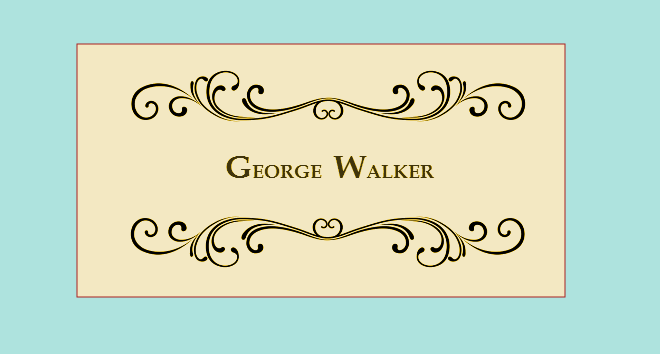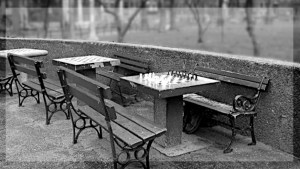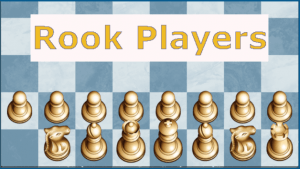
Walker

George Walker
George Walker's life (1803-1879) spanned one of the most remarkable periods of chess. As a chess player, he met and played such personalities as John Cochrane, William Lewis, Alexander McDonnell, Labourdonnais, Pierre Charles St. Amant, Jozsef Szen, Hyacinthe Boncourt, Frederick Lokes Slous, Capt. Evans, Howard Staunton, George Perigal, William Popert, Hugh Alexander Kennedy, Eugene Rousseau, Aaron Alexandre, George Spreckley, Bernard Horowitz, Daniel Harrwitz, Lionel Kierseritsky, George Medley, Arthur Skipworth, Paul Morphy, Ignatz Kolisch and William Steinitz.
For a marvelous summary the George Walker's chess life see Bill Wall's Chronology.
Industrious and entrepreneurial even at the age of 17, after serving only two years as an apprentice bookseller, he started his own successful bookselling business with little more than the few shillings in his pocket.
Now this George Walker wanted not just to sell books, he wanted to write and publish them too. And write them he did. Among his titles are:
"The Romance of the Cavern" History of Fitz-Henry and James
"Cinthelia" or "A Woman of Ten-Thousand" 4 volumes
"House of Tynian" A Novel in four volumes.
"Theodore Cyphon" or "The Benevolent Jew" A novel
"The Vagabond" A Novel - Volume 1
"The Vagabond" or "Practical Infidelity" A Novel
"The Three Spaniards" a Romance volumes 1-3
"Don Raphael"
"The House of Tynian" A Novel in two volumes
"The Haunted Castle" A Norman Romance in two volumes
"The Adventures of Timothy Thoughtless"
"The Midnight Bell" (possibly by E. Lathorn)
"Poems on Various Subjects"
"The Battle of Waterloo" A Poem
"Two Girls of Eighteen"
"The Travels of Sylvester Tramper in Africa"
Some of these novels and poems covered historic events. He also wrote children's stories. His books enjoyed at least moderate success since they were republished in Dublin and the United States as well as translated into both French and German.

1798
George the elder found time to marry and in 1803 he and Elizabeth had a son, George Walker the younger. Around this time he had moved his shop and residence to No. 6 Great Portland St. and began a music publishing business along with his bookselling. He was advertised as "a publisher of music at half-price and warehouse of Hope's Hectic Pills." The Hope's Hepti Pills sold at "2s. 9d. per The Box, wholesale and retail - gratis to the Poor."
The journal "The Medical Observer" was designed to protect the public from deceptive medical practices and claims. In the article "On Quack Medicine" not only is the manufacturer, Laurance Hope, attacked but also Walker as the published of Hope's essay on the treament of consumption, as one of the purveyors of the Pills and as the person "authorized to sign the directions for Hope's Hectic Pills." Besides Walker, the Pills were sold by Ward in Holborn, Sheppard in Bristol and Hazard in Bath. I found an ad in the "Northhampton Mercury," as late as Aug. 8, 1813 for the Pills being sold at 2s. 9d. by George Walker at 6 Great Portland St. and Laurance Hope's Essay on Consumption selling for 2s.

When George the younger was old enough to work, he joined his father as a partner and they moved to Soho Square where they specialized in the music publishing. The father and son worked together until the older George died in 1847. This was a turning point in the younger man's life. He retired from serious chess, sold the family business and took a postition in the London Stock Exchange.
a small note:
The easily accessible "Dictionary of National Biography" and well as HJR Murray claim that Walker and Son was located at 17 Golden Square in Soho. This possible mistake from such austere sources had been duplicated multiple times. The "Oxford Dictionary of National Biography" gives the verifiable address of 17 Soho Square in Westminster. George Walker himself gives that address in his advertisements and in his brief autobiography in the Dec. 1876 "Westminster Papers" where he said his father had set up both shop and residence there since around 1817. No such sources mention "17 Golden Square". The "Survey of London" calls the building on 17 Soho Square, "The Portland Estate," mentioning George Walker the elder lived there from 1820-1847. :

No. 17 Soho Square is the building in the corner where the younger George said his father, who died in 1847, had lived for 30 years:

Besides music Walker and Son also continued to published books:

In his brief autobiographical article in "Westminster Papers," Walker claimed he was never a first class player but that during the half decade between the death of Alexander McDonnell and the ascendancy of Howard Staunton he was the foremost player in London. Murray had noted that during that time Walker, Slous and Popert were the strongest London players with little difference between them, but the recorded games show us that Frederick Lokes Slous was, by far, stronger than both Walker and Popert.
Walker's place in chess history has little to do with his play, however fascinating it is to follow. The London Chess Club was founded on April 6, 1807 and its members included the finest gentlemen, professional men who could take a leisurely afternoon hiatus to play a long game of chess and included as well as the upper echelon of chess talent in the city. When young George came along, such a club was beyond his means, skill, status and locale. He desired to establish a more welcoming workingman's club on the west end of town. On his way toward this goal, which he accomplished with the establishment of the Westminster Chess Club in 1831 and then with the longer-lasting St. George's Club in 1843, Walker had several other notable accomplishments. Although the first newspaper chess column, edited by Egerton Smith, ran in "Liverpool Mercury" from July 9, 1813 to August 20,1814, in 1835 Walker edited the second such column and one of the longer lasting ones (38 years) in "Bell's Life in London and Sporting Chronicle" (many of his columns are available at Nick Pope's Chess Archeology)."\ Walker's periodical, "The Philidorian," created in 1837, was the first dedicated chess magazine in English.
"Chess: New Variations on the Muzio Gambit" - 1831
"New Treatise on Chess" - 1832
"Selection of Games Actually Played by Philidor and his Contemporaries" - 1835
"Chess Made Easy" - 1837
"Chess Studies: comprising One Thousand Games
actually played during the last century" - 1844
"The Art of chess play" - 1846
"Chess & Chess Players: consisting Original Stories and Sketches" - 1850
and the following articles that appeared in "Frazer's Magazine for Town and Country":
"Deschapelles: The Chess-King" -1839
"Kieseritzky the Livonian chess-player!" - 1841
"Mated and checkmated; an oriental sketch" - 1842
"The Game of Chess, a scene in the court of Philip the Second" - 1852
Walker also wrote a book on Cribbage:

In a few of his books, he styled himself "Teacher of Chess" just as William Lewis had before him. Sarratt and Verdoni called themselves "Professors of Chess."

Something about Walker seemed to have ruffled some feathers. A group (or a single person hiding behind that appellation) calling itself the "Society of Amateurs" self-published a quite sarcastic, mocking and somewhat insipid critique of both Walker and his one book, "A New Treatise on Chess."


George Walker and William Lewis had a rather peculiar relationship. There is no doubt that Lewis had been Walker's mentor and probably the prime mover behind his advancement in chess. Like Sarratt before him and like Walker himself, Lewis was partially dependant upon selling his books for his livelihood, at least during the 30s and early 40s. The two men had opposing views on books. Lewis wanted to deliver the highest quality and mostly original content at a reasonable price. Walker felt books should be compact, simple and cheap. However the market for chess books was limited. As the public turned to Walker's cheaper books, Lewis was forced to lower his prices, resulting in a price war between them.
Murray wrote:
Unfortunately, Lewis considered himself unfairly treated by the entry of Walker's cheaper books on the market, and an amusing war began between the two, in which each writer tried to cut out the other's works by books at a lower price. Walker's contribution to this war was his "Chess Made Easy," in 1836, at 3s. 6d.; and Lewis carried off the honours with his half-crown ''Chess Board Companion." Although the net result was precisely what Walker had desired all along—the accessibility of chess books at a moderate price—the warfare left a bitterness between the two writers, which was still active as late as 1846.
Historian/collector Dale Brandreth wrote:
There was some rivalry between Lewis and Walker as to how cheaply a chess book could be produced:- Lewis brought out ‘Chess for Beginners’ at 5/-, Walker followed with ‘Chess Made Easy’ in 1837 for 3/6 and Lewis came back with ‘Chess Board Companion’ at 2/6. Walker gave in at this point, for, “it was clear”, he said, “that if I carried on the war with ‘Chess for the Masses’, at a single shilling, my competitor would rejoin with ‘Chess for the Millions at sixpence”. All these books were popular and helped chess.
Their acrimony didn't just involve money but also charges of plagiarism. In the preface to "A Treatise on the Game of Chess" in 1844, Lewis wrote:
I cannot close this Preface without noticing the conduct of Mr. George Walker, in his Treatise on Chess, published in 1833, and again in 1841.
Long after the publication of the former edition I waa informed by a friend that Mr. W. had been guilty of a wholesale . . . what shall I call it? . . . appropriation of many pages of original matter from my Second Series of Lessons, published in 1832. I found, on examination, to my great surprise and regret, that Mr. W., who on all occasions has vehemently (though not always justly) exclaimed against the practice of "plundering" from others without acknowledgment, had himself, without permission from me, or any avowal on his part, copied from my work what he well knew was alone my property, and this not a move or two to criticise or comment on, but whole pages.
In the last edition of Mr. W.'s book, whether from a returning sense of propriety or from some friendly hint, he says in the Preface, after mentioning my name, that he has not hesitated to avail himself occasionally of my labours, "feeling that to shrink from naming a cotemporary author is equally contemptible as ridiculous;" he also states that he holds "such borrowing to be perfectly legitimate, when the avowal of obligation is openly proclaimed;" but Mr. W. need not surely be reminded, that where there is a borrower there must also be a lender; and that before making use of another person's property, it is indispensable to obtain the consent of the owner.
I am not aware that I have myself taken any original matter from Mr. W.'s book; if I have so done, it has been from inadvertence, for which I beg his and my reader's pardon.
Whether Mr. Walker will have the manliness to confess that he has done wrong, and is sorry for it, is a matter that concerns himself, but is of no importance to me.
12, Chatham Place, Blackfriars, December, 1843
Walker felt obligated to reply in both "Bell's Life in London" and in his 1846 "The Art of Chess-play." Walker explains how Lewis' works "borrow" from other writers and how Walker had provided valuable input and editorial work for the Lewis's "Second Series of Lessons."
Personally, I can bear him no ill will for having forgotten the old proverb, that "those who live in a glass-house should not throw stones. "His " Elements of Chess." taken almost to a word from "Von Nieveld's La Superiority, " &c. ; his "Oriental Chess," concocted upon terms of equal cheapness from its Indian composer, "Trevangdicharya ;" and other grave cases of mystification as to real authorship, have marked through life the chess-track of Mr. Lewis.
Walker also pondered Lewis' real motivation, suggesting his attacks to be a form of misdirection:
Reflection convinces me that Mr. Lewis's present attack rests in reality on far other grounds than those assigned. He appears, indeed, I fancy originally to have considered chess writing as a 'snug little farm' within a ring fence, exclusively his own property, and not to be invaded by foot of other man. Such delusion is not uncommon. Have my books intrenched on this would-be monopoly ? Is this the real offence ?
He also accused Lewis of starting and precipitating the price war:
When I printed my 'Chess Treatise' in 1832, at three shillings, and in 1833 at five, the sole competing work being Mr. Lewis's at two pounds, I con-
sidered I had opened up new ground, and could in no respect interfere with Mr. L. : yet he speedily started in opposition with a five-shilling book, called ' Chess for Beginners.' Not liking to be cut out in my own road, I put on 'Chess made Easy,' in 1837, at three and sixpence, when Mr. L. directly answered with an abridged edition of 'Chess for Beginners,' at half-a-crown, under the title of 'Chess-Board Companion.' Here I gave in, for it was clear that if I carried on the war with 'Chess for the Masses,' at a single shilling, my competitor would rejoin with a sixpenny 'Chess for the Million.' Mr. Lewis has just published a first book again, called 'Lessons' at seven shillings, and the 'Treatise' at eighteen ; in fact, he continues printing the same matter over and over again, in different sizes to suit all customers. I cheerfully admit his books have one advantage over mine, they are larger.
Westminster Papers
May 1874
The even of the current month will, undoubtedly, be the public sale of Mr. George Walker's Chess Library, which is announced to commence at one o'clock on the 14th instant, at Sotheby and Wilkinson's. 13 Wellington Street, Strand. Mr. Walker's collection comprises over 300 volumes, in type and M.S., many of them of exceeding rarity, and we trust it may not be allowed to go out of England. No provincial Chess Club should let slip such an opportunity as this sale affords for the formation of a library. Catalogues may be obtained upon application to Sotheby and Wilkenson, at the above-named address.
June 1874
Amongst the events of the month we must mention the sales of Mr. George Walker's, and Mr. Whitman's Chess works. What pangs these gentlemen suffered at parting with the works they loved so well those only who are, or have been, book collectors can realize. The manuscripts of Mr. Walker were, in some instances, original, and these sold freely. Other manuscripts, consisting of collections of problems corrected by Mr. Walker, were, we hope, bought as mementoes of one who has done so much for our pleasure ,' but the books sold for little or nothing. The collection was divided into 314 lots, and embraced copies of the works of most of the great masters, notably Ruy Lopez, Damiano, Salvio, Gianutio, Greco, Selenus, Severino, Lolli, Ponziani, Philidor, Lasa, Lewis, and many others, dating from 1534.
The City of London Chess Magazine, June 1874
On the 14th of May the sale of Mr. George Walker's Chess library took place at Messrs. Sotheby, Wilkinson and Hodge's, Wellington-street, Strand. From some cause, it may be from want of sufficient publicity, there was a much sparser attendance than we should have expected. The books realized as much probably as could ordinarily be expected at a sale by auction, but the fine collection of manuscripts went far below their real value. We may mention, as an interesting incident of the sale, that a lithograph of the Chess match between Mr. Staunton and Saint Amant, with which was a fac simile of the French Chess Club, as also a portrait and autographic inscription of Harrwitz, fetched £3 11s.
Finally, I must agree with HRJ Murray that George Walker is best remembered for his kindness and generosity towards impoverished chess players.
One of the pleasantest features about Walker - and his character seems to have been a very pleasant one throughout- was his kindness to other players less fortunately placed than himself. He did all he could for Labourdonnais in the last years of his life, and buried him at his own expense, Again and again we find appeals for subscriptions for the assistance of other players or their widows, and Walker's name usually heads the list of subscribers. He was always ready to 'send a hat around' for others.
As for Walker's chess play, I found it interesting to watch his development through his odds games against his mentor, William Lewis. Murray again tells us that Lewis was giving Walker Rook-odds in 1827, Knight-odds in 1829 and Pawn&2-odds in 1830-1. Below are games at these odds:
In 1828-9 Walker had played a series of games giving odds to Robert Smart, the author of the largely forgotten 1824, "The Chess-players friend : a collection of three hundred games from the works of the most eminent authors illustrated with annotations on all the principal moves affording examples of every scientific method of commencing the game. To which are added an account of the most celebrated players who have written on the game." The series ended equal.

Related Articles:
After There Were Books
Almost a Champion
The Ups and Downs of John Henry Huttman
HRJ Murray's article on Walker, Walker's obit from the "Huddersfield College Magazine" and Walker autobiographical article from "Westminster Papers"






